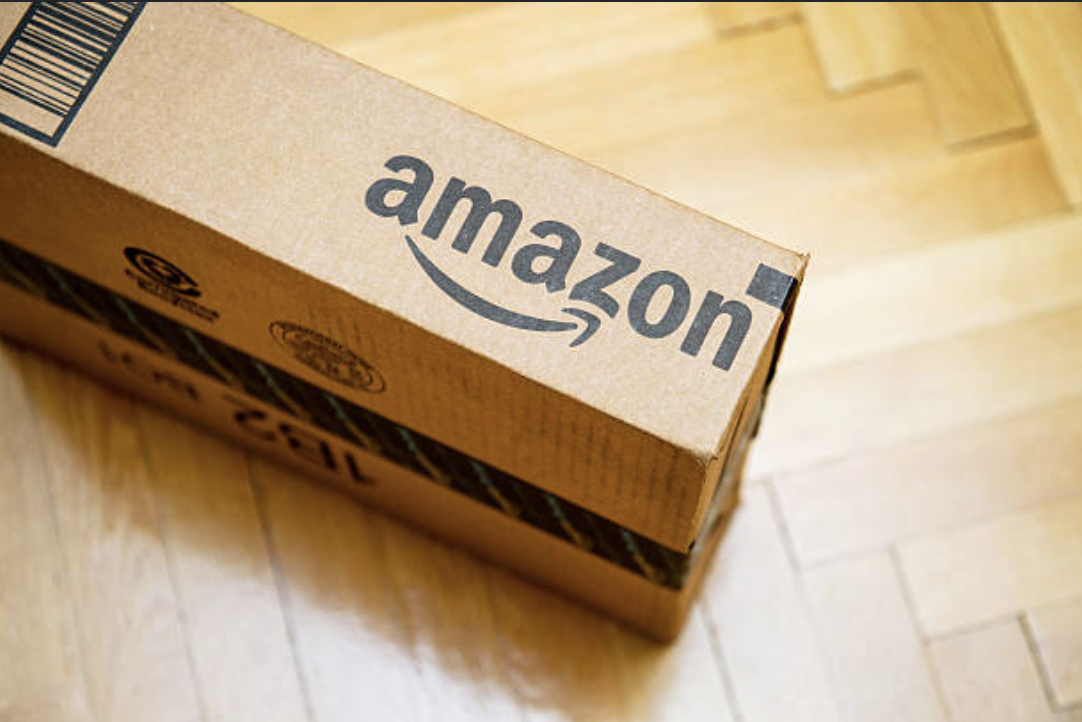If you’re looking to scale your Amazon business, selling internationally seems like the best way to achieve that.
International Amazon expansion can be challenging, but also extremely lucrative. With 4.6 billion global visits per month the retail giant is constantly attracting more brands and developing new tools to support their expansion to new marketplaces.
These efforts resulted in the creation of AGS- Amazon Global Selling Program which basically allows you to to list and sell your products on Amazon’s global marketplaces.
With Amazon Global Selling (AGS), you can tap and sell into various marketplaces and get access to a huge customer base.
Amazon currently operates in the Americas, Europe, Asia-Pacific Region and Middle East (full list below).
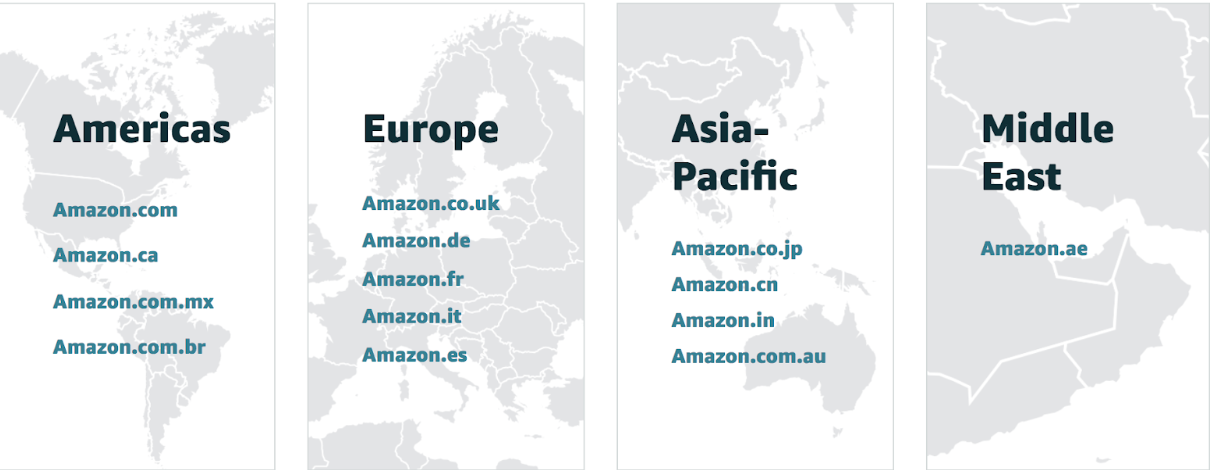
Image courtesy of the Amazon AGS page: https://services.amazon.com/global-selling/overview.html
Each marketplace poses a valuable opportunity for sellers to increase both exposure for their products and sales.
In this article, we’ll look at how to set up your Amazon Global Selling account, check out the selling requirements, and give you tips on how to use manage your international listings.
What are my options for creating international listings on Amazon?
Selling internationally on Amazon seems to be easier than before. But, still not simple.
To start creating international listings on Amazon, you can register for Amazon Global Selling (AGS).
As we explain the options and process for joining AGS and creating international listings, we are going to assume that you are already a registered Individual or Professional seller on Amazon.
What is AGS?
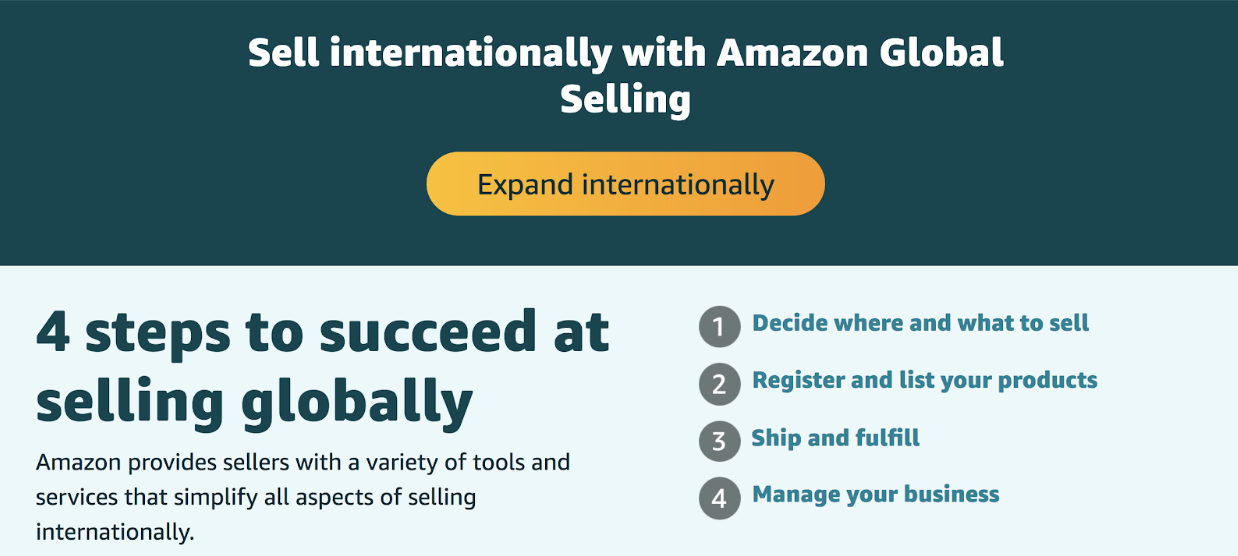
Image courtesy of the Amazon AGS page: https://services.amazon.com/global-selling/overview.html
Through the AGS program, you can list and sell your products around the world.
Currently, you can sell to 13 international marketplaces through this program.
The advantage of AGS is that it allows you to manage offers for all these marketplaces under one program and give you a global overview of your account.
The list of Amazon marketplaces include:
Europe:
- Amazon.de – Germany
- Amazon.co.uk – United Kingdom
- Amazon.fr – France
- Amazon.es – Spain
- Amazon.it – Italy
Asia:
- Amazon.in – India
- Amazon.co.jp – Japan
- Amazon.cn – China (no longer available)
- Amazon.com.au – Australia
North America:
- Amazon.com.mx – Mexico
- Amazon.ca – Canada
- Amazon.com – United States
- Amazon.com.br – Brazil
Some of the online marketplaces are somewhat new – for example, the Australian market was established recently and Amazon Netherlands is still in the works.
Basically, you need a seller account (individual) for every country – with an exception of Unified accounts for:
- Europe (UK, France, Germany, Spain, and Italy)
- North America (Canada, Mexico, and the U.S.)
After you sign up in any one of these online marketplaces, you will automatically get access to all the other countries that are included in your Unified Account. We’ll explain the process in more detail below.
Things to consider before selling internationally
Before joining AGS or selling in another international marketplace, there are a number of important things to consider:
1. Product – Make sure that your product is appropriate for your target market, and that it conforms to all laws, regulations, and standards in that country. This could be anything from needed voltage for electrical products (110v vs 220v), to mattress or clothing sizes, to legally allowed supplements.
Do your market research and check how similar products are ranking on your new marketplace.
2. Taxes – Each country has different tax laws, and it’s vitally important to be properly registered to collect them as required.
For example, if you sell goods in any EU country, you’ll need to register for Value Added Tax (VAT) in each country you sell in.
3. Regulations and Requirements – As an Amazon seller, you are responsible for following any regulations and requirements for selling your product in a particular county, and for selling in a particular Amazon marketplace.
For example, on Amazon.jp you will need to have ‘’an importer of record’’- somebody who is responsible for importing your goods into Japan at the point of import. Without an importer, your shipment will be rejected at customs and sent back.
See the specific registration requirements for each Amazon marketplace here.
How do I sign up for AGS?
Once you have decided where and what to sell, and are in compliance with all the tax and regulatory issues, it’s time to set yourself for international selling.
Amazon has a handy page for AGS that will guide you through a lot of the process.
Your Amazon selling account needs to be set up for the online marketplace where you want to sell.
Even if you already sell in one Amazon marketplace, you will need to create a new seller account in another marketplace.
For example, if you sell in the United States or in Japan and want to sell in the United Kingdom, you need to create a new Amazon seller account for Amazon.co.uk.
There are two types of Unified accounts that simplify this process further. These accounts cover multiple marketplaces:
- Europe (UK, France, Germany, Spain, Italy and The Netherlands)
- North America (Canada, Mexico, and the U.S.)
After you sign up in any one of these online marketplaces within Europe or North America, you will automatically get access to all the other countries covered in that Unified account region.
Important things to note:
- In the EU, Amazon has online registration processes in the local language.
This means German for Amazon.de, French for Amazon.fr, Italian for Amazon.it, and Spanish, Dutch for Amazon.nl and Spanish for Amazon.es.
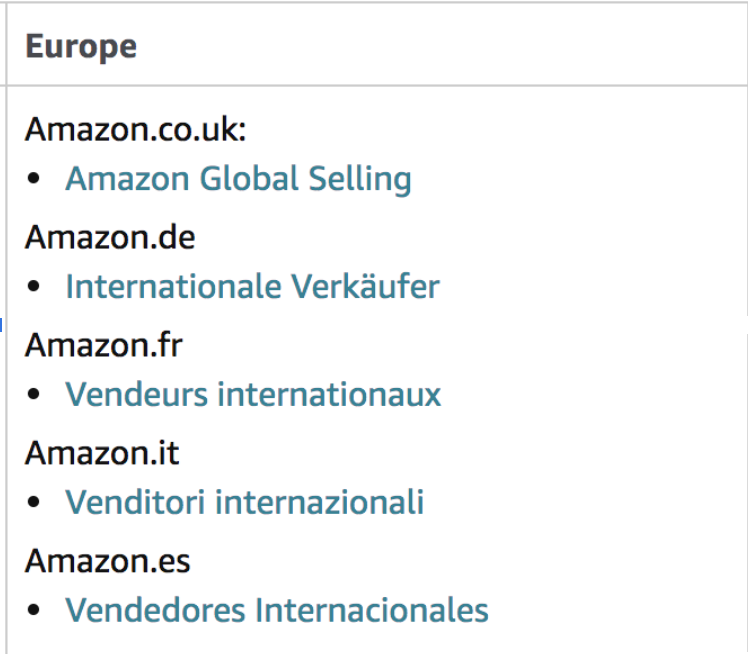
Tip: If you don’t speak these languages and want to sell in any of these marketplaces, the trick is to register in English on Amazon.co.uk, then use the Unified Account to create offers across any of the EU marketplaces.
We’ll explain how to do this below.
- As of July 2019, Amazon no longer provides seller services for Amazon.cn (China).
Customers in China will still be able to buy items from the U.S., Germany, Japan and the U.K. through Amazon’s global site linked to the Amazon.cn URL.
How to link your international Seller Accounts through AGS
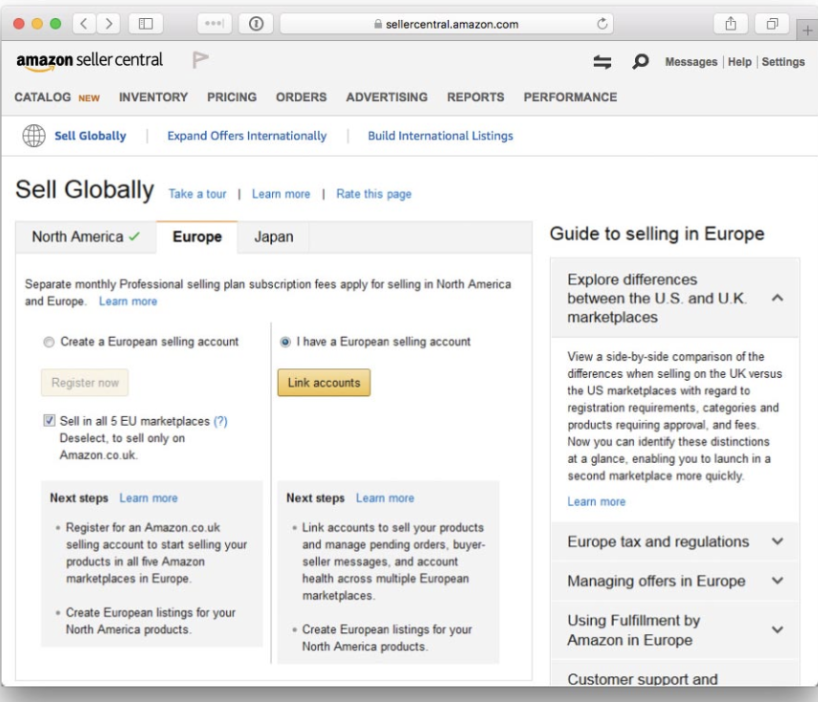
The next step is to link your international seller accounts to your primary account in Seller Central.
To do this, simply:
- Select Inventory from the menu bar
- Click on ‘’Sell Globally ‘’
- View the tabs for all the regions available to link
- Select your new target marketplace
- Then, either register as a seller in that market, or –
- If you have already created an account there, link it to your Seller Central
Next, you need to set up payments.
How to set up international payments
For each new marketplace you are registered in, you’ll need to set up your account to receive international payments.
You have three options to choose from:
- Use a bank account in the marketplace where you want to list.
- Use Amazon Currency Converter for Sellers.
- Use a third-party currency conversion service.
Once you have established your payment methods, then it’s time to create listings for your products.
How do I create listings with AGS?
Each marketplace may have different requirements for listings, so refer to the Listing Guidelines that can be found in the Help pages for each marketplace before you get started.
The following are the components of any Amazon marketplace listing:
- Product ID: A global identification number such as a UPC, EAN, or ISBN number.
- Product Title: A concise description of the product.
- Bullet Points and Product Description: Bullet points briefly list the top product features and catch the customer’s interest. The product description provides detailed information about the product.
- Product Images: Clear photographs of the product that show as much detail as possible. Images should be at least 500×500 pixels in size, although 1000×1000 pixels is recommended when you want your product to be viewed in detail. Some categories may have different image size requirements, so refer to the guidelines in Seller Central.
- Search Terms: Keywords that someone looking for your product might enter in the Search field. You can provide several search terms.
You have two choices to create listings:
- Use Add a Product Listing to add individual listings to marketplaces.This is a good strategy if you have a smaller inventory (less than 100 products). Alternatively, for sellers with Professional accounts and larger inventories, you can create an inventory file and load the inventory all at once with volume listing tool
- Use Build International Listings to list and manage your products across different marketplaces.This is best for volume listings or listing in multiple marketplaces simultaneously. (Available only to Professional Sellers, with AGS Unified Accounts in North America and EU or by linking accounts – see next question below).
Listings need to be in the language of the Amazon marketplace where you intend to sell.
For example, to sell on Amazon.de or Amazon.jp, your product listings need to be in German or Japanese.
Can Amazon’s Build International Listings tool create listings for me?
The Build International Listings (BIL) tool is a convenient and powerful way to manage your international offers across multiple global marketplaces.
It’s important to understand that BIL does not create new product listings (ASINs).
What it does is add offers IF the product listing already exists to the new marketplace. If the product listing does not exist, the offer WILL NOT be added.
Another thing BIL does not do is manage your inventory.
You must make inventory available for that marketplace in order to make the offer buyable in that marketplace.
In a related issue, you must also arrange shipping for that marketplace, either through Amazon FBA or by handling it yourself.
What are the requirements for BIL?
According to Amazon, you are eligible to use Build International Listings if you meet these requirements:
- Professional selling account
- European Unified Account if using Build International Listings in Europe
- North America Unified Account if using Build International Listings in North America
- Linked accounts between regions (if using Build International Listings across regions)
- Accounts in good standing in the marketplaces to be connected
Additionally, your offers must also meet certain requirements:
- An ASIN must have an active offer in the source marketplace.
- A product must comply with all applicable laws, and not be prohibited in the target marketplace.
- A seller must be approved for restricted products or categories.
What can I do with BIL?
BIL has some really useful features to help you sell your products internationally. You can:
- Link product offers within a region using Unified Accounts.
Using Linked Accounts, you can link offers across marketplaces. - You can synchronize offer pricing across marketplaces. You can have Amazon automatically update your prices, reflecting up-to-date currency conversion fluctuations.
- When you make changes in your home marketplace, you can automatically add or delete offers in your target marketplace.
- When using Pan-European FBA, you can synchronize your inventory across European marketplaces.
Considerations when using BIL
While very useful in setting up offers across international marketplaces, BIL has a number of limitations you need to keep in mind.
Listing and Product considerations
- On the good side, creating listings with BIL is simple, quick, largely automated, and cheap.
- In all the marketplaces where you want to sell, you will still need to create product detail pages.
- Even if your offer is inactive in your home marketplace, you will still need to remove offers in the target marketplaces manually.
- While pricing is easily adjusted using the tool, it doesn’t take into account pricing strategy. In order to truly optimize an international listing, you need to create a pricing strategy for each marketplace to reflect the market and the competition in your product’s category.
- Your international listing may wind up being mistranslated by using BIL.
- You are responsible for making sure your products are fully compliant with all local laws and regulations.
Inventory considerations
- If you are using FBA to fulfill shipments, your inventory will not be synchronized between North American markets. if you are using FBA to fulfill shipments
- Whether you’re using FBA or FBM, your inventory will not be synchronized between different regions.
With Amazon Global Selling, will Amazon translate my listings for me?
By participating in AGS, your listing will not automatically be translated by Amazon.
However, if you use BIL to create listings in international marketplaces, it might.
What appears to happen is that by adding your listing to certain international markets, an automatic machine translation occurs.
Anecdotal reports from sellers indicate that this translation quality is often poor, as to be expected from current AI machine-translation technology.
While BIL specifically does not translate your listing, it does help you discover which markets it has been translated in and which it has not.
Translation errors are the last thing you want when moving into a new marketplace.
- They lower your credibility as a seller, and of your products.
- They confuse potential buyers, which leads to lower sales.
- Low traffic plus low conversions equal a failed expansion opportunity, so it’s vitally important to have your listing translated right.
Considering the importance of all these factors, it’s not a good idea to assume that any Amazon marketplace provided listing translation will be sufficient or acceptable.
If you’re not fluent in the language of the country where you intend to sell in their marketplace, you have two options for your listing:
- Hire a professional translation service, who is a native speaker of the language in your target marketplace, and has experience in the Amazon ecosystem, to assist with your product listings and customer service.
- Use Amazon’s Translate Your Products (TYP) tool to translate product titles and descriptions.
You can choose machine translation (free) or human translations by native speakers (per-word fee). If you’re considering this option, know that stories of dissatisfied sellers who tried this service are common.
For a great (terrible) example of what a badly mistranslated listing can be like, we turn to our friends at The Language Blog for this example:
…Who wouldn’t want to adorn their house with a “decorative fish net of strong Mediterranean Sea amorous feelings?”
What are Amazon’s international language requirements?
When it comes to your international listings, Amazon requires you to list your products using the primary language and currency of the Amazon marketplace website in which you are registered to sell.
While you can easily manage an international listing in your native language through Seller Central, you need to have the listing translated to be in compliance.
This isn’t just for the convenience of potential customers – this is good business sense.
80% percent of customers would rather buy products if the product description is in their own language, according to a recent survey.
A properly translated listing also makes a big difference.
Poorly written ad copy causes potential customers to distrust the credibility of a product or brand, and they’ll look elsewhere for one that seems more professional or legitimate.
There is also a language requirement for customer service, in which you must be prepared to respond quickly to customer contacts in the language of the Amazon marketplace website in which you are registered to sell.
This is a great reason to use Amazon FBA for selling internationally, as they will handle all of the customer service for you, and in the correct language.
How To Get Your Amazon Listings Professionally Translated
If you’re looking for a professional translation service that is focused entirely on the Amazon ecosystem- we are here to help you.
YLT- translations has a team of native speakers available in every language for existing Amazon marketplaces (with Dutch native speakers & translators as the newest edition).
We have successfully translated & optimized over 1000 listing for every Amazon marketplace and we are ready to assist you with listing translations and optimizations.
Contact us here for a prompt response, say hi to our chat box in the right corner of the screen, or order a listing translation directly through our page.
